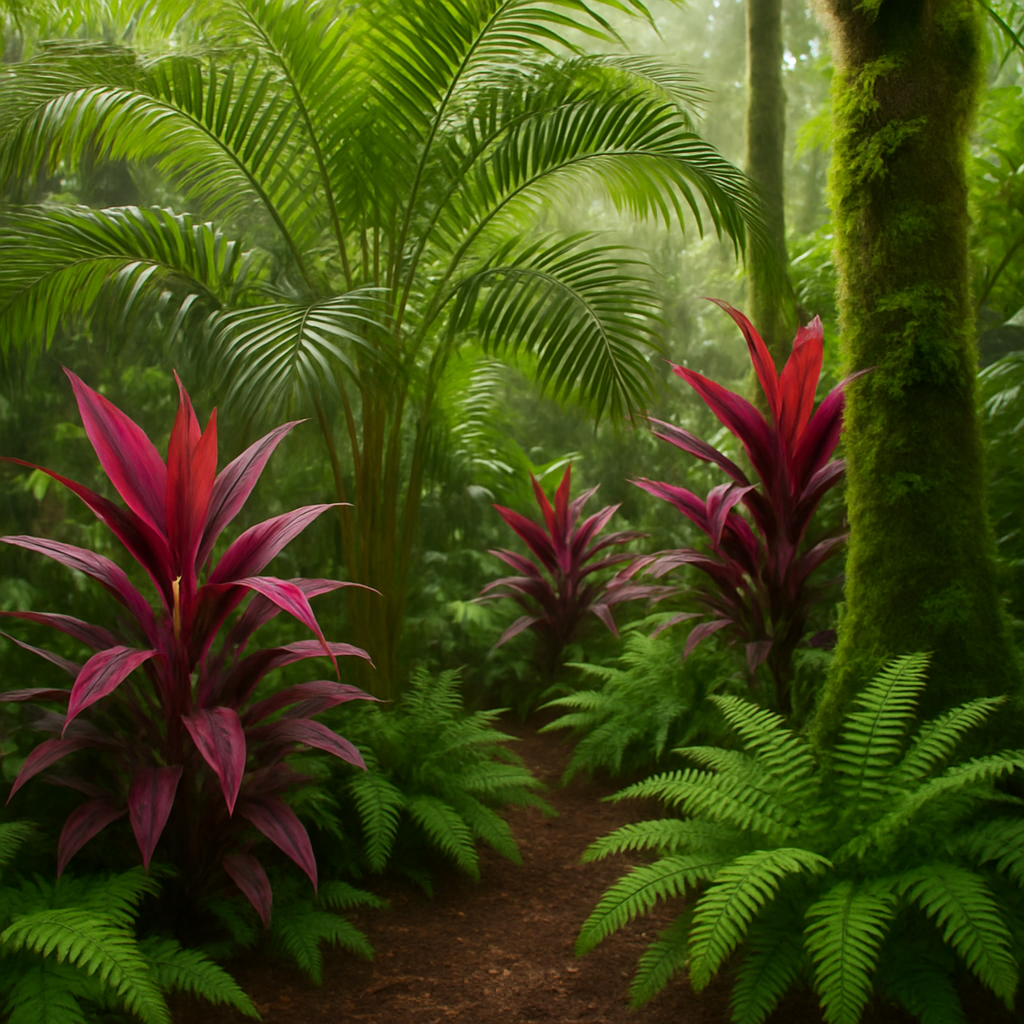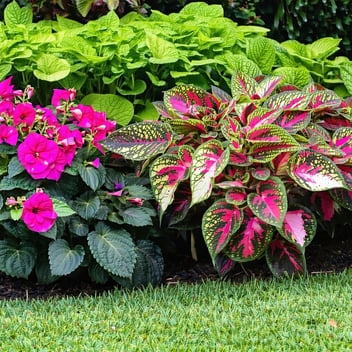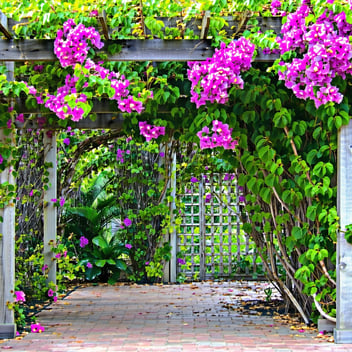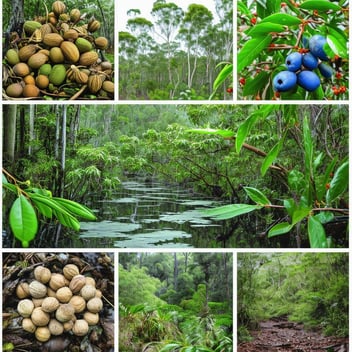Foliage Plants That Thrive in Hot and Humid Climates
1. Introduction
Hot, humid climates demand resilience. The air feels heavy. The soil often soggy. Many plants wilt or suffer mildew. Yet some foliage species not only endure—they flourish. Tropical greens bring lushness, drama, vitality. Their foliage becomes a living tapestry in gardens, indoors, and in floral design.
2. Key Environmental Conditions
Light Intensity and Shade Requirements
These plants hunger for light but not always full sun. Some species perform best in dappled shade or filtered sunlight. Others demand direct, intense light for part of the day. Balancing light helps avoid scorching or bleaching of leaves.
Soil Moisture and Drainage
Water is abundant in many hot, humid climates—but so are fungal risks. Soil must retain moisture yet drain well. Heavy clay can suffocate roots; overly sandy soil loses moisture too fast. The sweet spot is loamy or rich soil with organic matter.
Temperature Ranges and Humidity Levels
Consistent warmth—often above 18‑20 °C—and high relative humidity (60‑90 %) create the ideal milieu. Nights that remain mild help many tropical foliage plants to thrive. Sudden drops in temperature or dry air are their bane.
3. Top Foliage Plants for Heat and Humidity
Palms and Palm‑like Species
-
Dypsis lutescens (Golden Cane Palm / Areca Palm) loves warm, humid settings. It brings elegant pinnate fronds and tolerates partial sun.
-
Cordyline fruticosa (Ti plant) offers colourful or variegated foliage and flourishes in warmth.
Broadleaf Tropicals
-
Cordyline species above are broadleaf examples.
-
Also consider plants with glossy, large leaves that resist wilting under moisture and sun stress.
Ferns and Epiphytes
-
Boston fern (Nephrolepis exaltata) revels in humid summers.
-
Epiphytic ferns and mosses that cling to bark or elevated positions can avoid soil saturation while benefiting from ambient moisture.
Variegated and Colorful Foliage
-
Plants with variegation often have unique patterns of light and dark—useful for shade management as variegated leaf tissue is more vulnerable to sunburn.
-
Colourful foliage (reds, purples) often comes with increased requirements (light, nutrients), but when well chosen, they add visual interest.
4. Plant Care Essentials
Watering Strategies During Peak Heat
Water deeply rather than frequently. Early morning is best. Watering at dusk can invite fungal disease. Monitor soil moisture; ensure it remains consistently damp—not waterlogged.
Mulching and Soil Amendments
A thick layer of organic mulch helps retain moisture and regulate soil temperature. Compost or well‑rotted manure enriches the soil and improves its structure. Mulch also suppresses weeds which compete for water.
Fertilisation Routines
Use balanced, slow‑release fertilizers in growing seasons. Humid climates drive fast growth: foliage often needs replenishment of minerals. Avoid over‑fertilising which can damage roots. Organic feeds or foliar sprays help.
5. Pest and Disease Management
Common Pests in Humid Settings
Scale insects, mealybugs, spider mites often multiply in warm moist air. Vigilant inspection and early intervention are essential.
Fungal and Bacterial Concerns
Leaf spot, powdery mildew, root rot. Stagnant air and prolonged wet foliage exacerbate these. Prune for air circulation. Avoid overhead watering where possible.
Preventative Measures and Treatment
Copper sprays, organic fungicides, neem oil, or biocontrols. Good sanitation: remove dead leaves. Keep foliage dry in evenings. Use well‑draining soil and avoid soggy pots or beds.
6. Placement and Design Tips
Microclimates Within Your Garden
Shade under trees, walls that reflect heat, or spots protected from wind can act as refuges. Use these micro‑zones to situate more delicate species.
Grouping Plants to Benefit Each Other
Combine moisture‑loving plants together; group those that need more light in canopy edges. Using taller foliage to shield sun‑sensitive plants works.
Using Foliage as Foundation for Floral Arrangements
These resilient large leaves (palms, broadleaf tropicals) make excellent backdrops in bouquets. Their long stems and durability add drama and contrast to delicate blooms.
7. Seasonal Adjustments
Wet Season Care
Ensure drainage is optimal. Avoid water pooling at plant bases. Raise beds or use pots with good drainage holes. Reduce watering, since rain supplies plenty.
Dry Season Survival
Increase watering frequency lightly. Shade cloths or temporary shade structures help protect foliage from harsh sun. Mulch thickly to conserve soil moisture.
Preparing for Temperature Fluctuations
Even in tropics or subtropics, brief cold snaps occur. Choose species hardy to local chill. Use frost cloth or move container plants indoors when needed. Remember that sudden cold is more harmful than gradual change.
8. Conclusion
Hot, humid climates are not the enemy—they are an opportunity. Foliage plants adapted to such conditions can create lush, vibrant gardens that rival tropical paradises. With thoughtful selection, proper care, and strategic design, foliage becomes the backbone of year‑round beauty. Imbue your space with greenery that thrives, not just survives.




